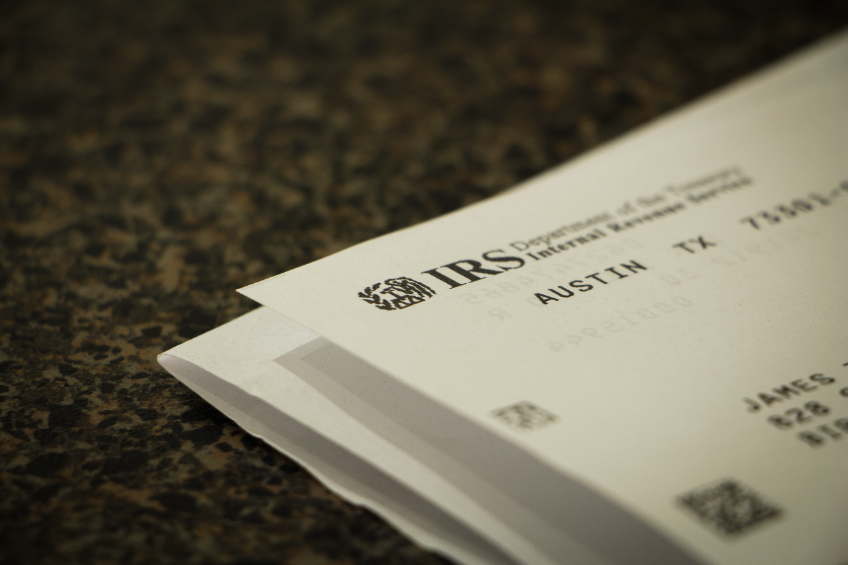
I must have been doing something right for years — I’ve never heard of this Adjusted Refund letter.
An Adjustment Notice is a letter sent by the IRS to a taxpayer informing them of changes made to their tax return. The notice contains details on the adjustments made, the reasons for the changes, and the resulting amounts owed or refunded. It is important to review the notice carefully, as it may indicate additional taxes owed or penalty charges.
Additionally, the Adjustment Notice explains the appeal rights of the taxpayer and provides instructions on how to request payment or appeal the notice.
This notice may indicate that the taxpayer has a balance due, is entitled to a smaller or larger refund than originally reported, or that the IRS has a question or needs additional information about their tax return.
It’s important to read this notice carefully as it provides important information about your tax return. The first step is to review your tax return summary and compare it with the changes made by the IRS. This will help you understand the reason for the adjustment and determine if you need to provide any additional information.
If the IRS has requested additional information, it’s crucial to respond by the deadline indicated in the notice. Ignoring or delaying your response may lead to penalties and interest charges.
Overview of Your IRS Adjusted Refund Letter
If you have received an IRS Adjusted Refund Letter, it’s important to understand the information provided in the notice. The letter could include changes made by the IRS to your tax return, additional information required, and the reason for the adjustment. In this article, we will provide an overview of the IRS Adjusted Refund Letter and the steps you should take to review and respond to the notice.
Tax Return Summary
The tax return summary section of an IRS adjusted refund letter is a crucial part of the document, providing a comprehensive overview of the taxpayer’s entire tax return. This section will list out the original refund amount that you claimed on your tax return and detail any necessary adjustments that the IRS has made.
The summary will highlight any additional taxes that you still owe or any penalties that you may have incurred due to errors or noncompliance. This section will also detail the Recovery Rebate Credits or Child Tax Credits that have been adjusted, if applicable.
This detailed summary section illustrates how the IRS has reviewed your tax return calculations and any issues that may have arisen during the process. The adjustments made will be clearly defined and the final amount owed or refunded will be displayed, providing clarity about the result.
Changes to the Original Return
Receiving an IRS Adjusted Refund Letter may mean that changes have been made to your original tax return. It’s important to carefully review the letter in order to understand what adjustments have been made, and how they were calculated.
To ensure accuracy, the first step is to verify that the figures listed under “Your Calculations” match the figures on your original tax return. This can help identify any discrepancies that need to be addressed.
Next, take note of the “Changes to Your [Year] Tax Return” section. This will detail which area(s) of your tax return were affected by the changes. It’s important to revisit the relevant section(s) of your original tax return and review your initial entries for accuracy.
If discrepancies are found, make sure to correct them by modifying or adding the necessary information. This will help ensure that any penalties or additional taxes owed are minimized.
After making any necessary corrections, it’s important to print a copy of your revised tax return for record-keeping purposes. Having a clear and updated record can help prevent future misunderstandings or disputes, and provide peace of mind knowing that your taxes have been handled accurately.
Tax Refunds and Penalties
It’s important to understand that the IRS calculates and adjusts your taxes independently of your tax preparation platform. If the adjustment results in you owing additional taxes, the IRS may apply penalty charges and interest. The penalty for underpaying taxes due to negligence is generally 20% of the underpaid tax amount. However, the penalty could increase to 40% if the underpayment is due to fraud.
If you have unpaid taxes, private debt collection agencies could be involved. These agencies are authorized to contact you for the purpose of collecting unpaid federal tax debts. However, they must follow certain rules and regulations, such as the Fair Debt Collection Practices Act.
Additional Taxes Owed or Other Adjustments
Receiving an IRS Adjusted Refund Letter can be a stressful experience, especially if you were anticipating a refund. However, it’s important to understand that this notice is simply the result of a correction to your original income tax return. This correction may result in additional taxes owed or adjustments to your tax refund.
The notice may list several reasons for these adjustments. One common reason is errors in calculations made on your original return. Perhaps a mistake was made in a calculation or numbers were transposed by accident. The IRS may also find that there was missing information for dependents, such as a Social Security number or other required information. Changes to eligibility for credits, such as the Recovery Rebate Credit or the Child Tax Credit, may also trigger an adjustment.
If the adjustment results in additional taxes owed, the IRS may apply penalties and interest charges. The penalty for underpaying taxes due to negligence is generally 20% of the underpaid tax amount. However, the penalty may increase to 40% if the underpayment is due to fraud. Interest charges on unpaid taxes will generally accrue until the balance is paid in full.
Appeal Rights
As a taxpayer, it’s important to understand that you have the right to appeal any decision made by the IRS if you disagree with it. This is called your Appeal Rights, and exercising them allows you to challenge the IRS and be heard.
If you receive an IRS Adjusted Refund Letter that you don’t agree with, it’s important to act promptly. You have 60 days from the date of notice to write a signed statement explaining why you disagree and attach supporting documentation. This statement should be as clear and concise as possible, and should include your phone number and the best time of day to call, as well as your SSN, the tax year, and form number on each page attached to the response form.
Math Error Notices
Math errors in tax returns can occur due to a simple mathematical mistake or a misunderstanding of the tax laws. If you receive an IRS Adjusted Refund Letter that identifies a math error resulting in overpayment, it is important to handle it promptly.
The first step is to carefully review your tax return calculations and compare them with the math error adjustment that the IRS has made. If you agree with the IRS’s calculation, you don’t need to take any further action. The IRS will process the adjustment and issue an updated refund check or direct deposit accordingly.
However, if you disagree with the math error adjustment and believe that the IRS made an error, obtain proof of your calculation. Check all your records, including W-2 forms, 1099 statements, and other tax documents, as well as your bank statements, canceled checks, and receipts. Make sure that your calculation is accurate and includes all the necessary deductions and credits.
Types of IRS Adjusted Refund Letters
As a taxpayer, it is important to understand the different types of IRS Adjusted Refund Letters that you may receive. These letters indicate that the IRS has made an adjustment to your tax return, which affects the refund amount you were originally expecting. Below are some common types of IRS letters and the reasons for the adjustment:
- CP09 – This letter is sent to those who may be eligible for the Recovery Rebate Credit. The adjustment is made if the IRS determines that you are owed additional payments related to the Economic Impact Payments.
- CP10-13 & CP16 – These letters indicate that the adjustment was made due to a math error in your tax return or a modification of a tax credit you claimed. The CP10-13 series letters are specifically related to changes in tax credits, while CP16 pertains to general mathematical errors in your return.
- CP21 & CP22 – These letters are sent if the IRS made adjustments at your request or as part of an audit. CP21 is for changes the IRS made for the taxpayer, while CP22 is for changes made at the taxpayer’s request.
- CP23 – This letter is sent to those who reported an overestimation of their income. The adjustments may decrease your refund or increase the amount you owe.
- CP54 – This letter is sent if the IRS needs further clarification to verify your identity. You may need to complete additional steps to verify your identity before your refund can be issued.
- CP59 – This letter is sent if you failed to file a required tax return. The IRS may make adjustments based on an estimated tax liability, which could result in a decrease or increase in your refund amount.
It’s important to respond promptly to any IRS Adjusted Refund Letters you receive. Pay close attention to the details of the letter and reach out to the IRS if you have any questions or disputes about the adjustments made. Being informed about the types of letters you may receive can prepare you for any changes made to your tax return and help you better understand the refund process.

Markos Banos
Markos M. Baños Cabán, Esq., is the Director of Resolutions at Community Tax LLC, where he leads a team of practitioners and service professionals dedicated to resolving complex tax conflicts, including IRS audits, tax liens, and tax debt. A licensed attorney, tax practitioner, and notary public in Puerto Rico, Markos combines his extensive legal expertise and management skills to deliver exceptional results and reduce stress for his clients. He holds a Juris Doctor from the University of Puerto Rico School of Law and has experience in a variety of legal fields, as well as industrial management. Bilingual in English and Spanish, Markos is also a published researcher with a passion for delivering outstanding service.






